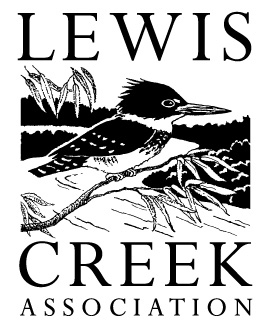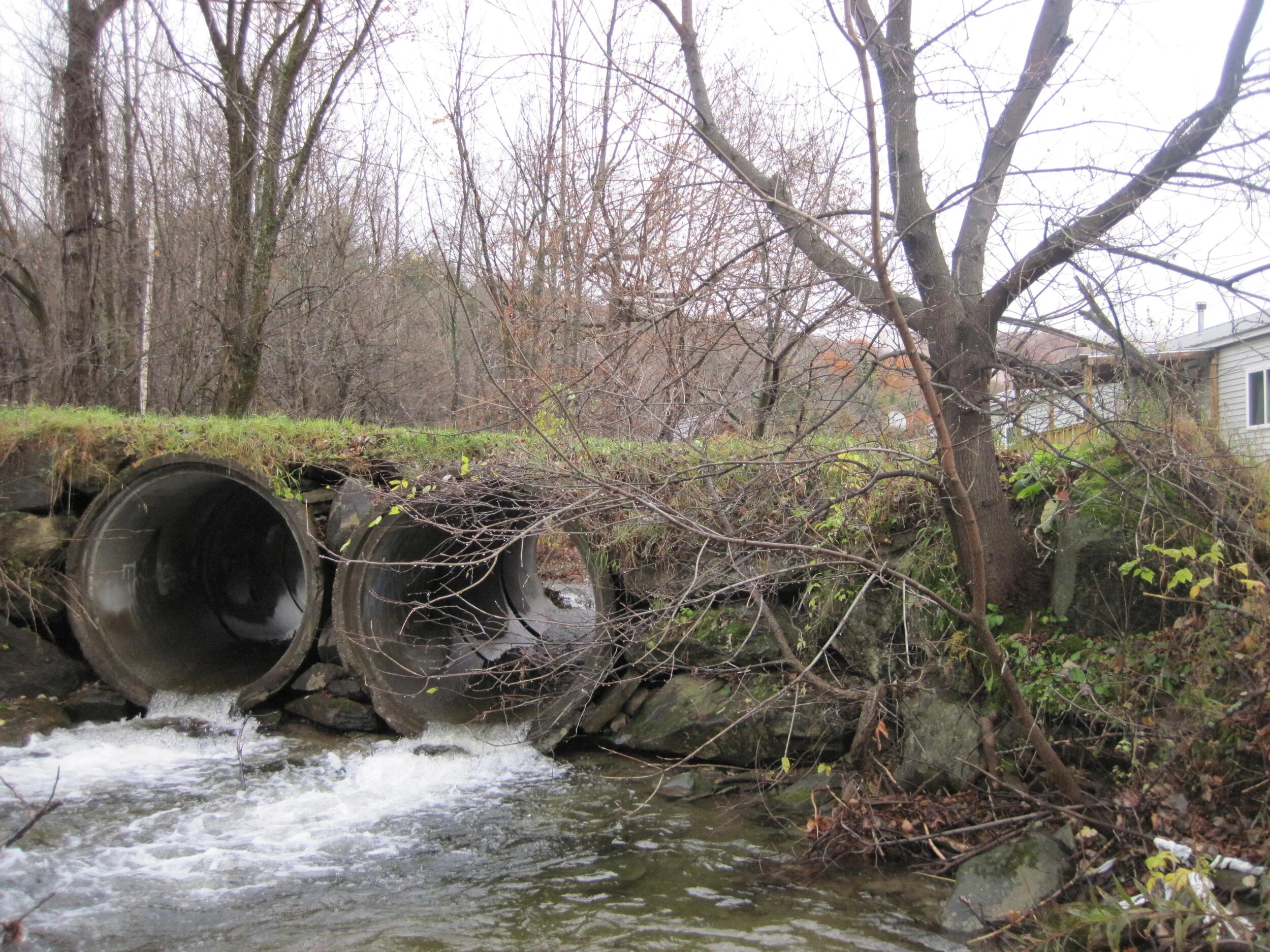Lewis Creek is one of Vermont’s most ecologically diverse streams. With increasing habitat degradation due to river encroachment by development and roads, land use change, and more extreme weather events, the Lewis Creek Association (LCA) has been working with Milone & MacBroom, Inc. to identify important refugia locations to conserve or restore the brook trout fisheries of Lewis Creek and its tributaries. Refugia are pools of cooler water temperatures within streams, which enable brook trout and other cold water species to survive periods of higher temperatures during the summer. Refugia can be preserved by leaving logs and other structures in streams, by allowing floodplains and backwaters to exist, and by maintaining riparian shading. These refugia will become especially important with increasing temperatures due to climate change.
A site in Starksboro where a culvert is impeding fish passage, and could be replaced, in conjunction with downstream riparian plantings and/or addition of logs to the stream, to improve habitat and refugia locations for brook trout.
In late October 2019, a water resource engineer from Milone & MacBroom, LCA staff, a local angler, and Mike Kline of Fluvial Matters, identified eight potential refugia restoration locations on Lewis Creek, Hollow Brook, and Pond Brook. The Hollow Brook refugia locations have outdated culverts that may impede brook trout passage, lack habitat structures within the stream, and have insufficient tree cover. The Lewis Creek and Pond Brook refugia locations mainly lack habitat structures within the streams and have insufficient tree cover to protect cold water in the stream. Many of the potential refugia restoration locations are located on private property. So, LCA will reach out to the landowners of these sites in the Lewis Creek watershed in the near future to begin planning for project design and implementation, which may include tree plantings, culvert replacement, and/or adding large woody debris to the stream. These projects will benefit many cold water species, including brook trout. The final report for this project, funded in part by a Vermont Watershed Grant, is now available on the LCA website in the Resource Library.
This project built on previous work conducted by LCA, and in the process, informed and educated community members in the Lewis Creek watershed through a talk given by Mike Kline of Fluvial Matters and a field trip with experts and a state fisheries biologist to view one of the proposed restoration sites. It was intended to promote community interest in the long-term stewardship of Lewis Creek, due in part to the increased knowledge gained by community members and landowners.
LCA is committed to improving the quality of fish and wildlife habitat throughout middle Lake Champlain Valley watersheds. If you are a landowner, angler, or interested citizen who would like to learn how to help protect our natural resources, please contact Kate Kelly, Program Manager for Lewis Creek Association, at lewiscreekorg@gmail.com or visit LCA’s website for more information.
A site in Monkton where trees could be planted along the stream, to shade and cool the waters of this tributary that feeds Lewis Creek, and eventually will fall into the stream, creating a refuge and habitat within the stream as well.




